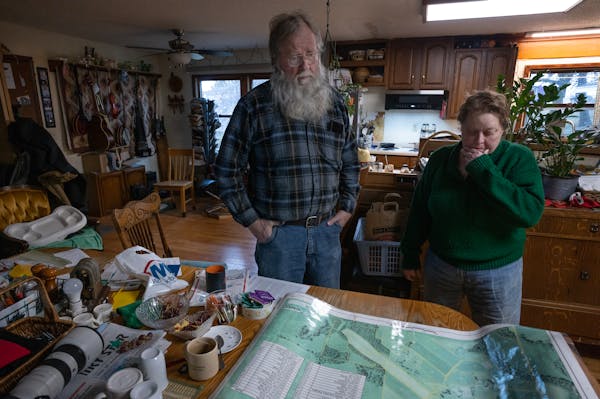Advocates say they're pleased the Minnesota Legislature put $16 million toward solving southeastern Minnesota's nitrate pollution problem, but some are concerned lawmakers shortchanged efforts to treat private wells in the region.
"We need to see significant additional investments in public health support for private well owners in particular," said Carly Griffith, water program director at the Minnesota Center for Environmental Advocacy, which helped get the U.S. Environmental Protection Agency involved in addressing nitrate issues throughout the region last year.
The $16 million lawmakers allocated will pay for testing and cleaning up wells polluted with farm runoff and help farmers change their practices to reduce that runoff.
Minnesota promised the EPA in December that it would act quickly to help residents in southeastern Minnesota who had dangerous levels of nitrate in their wells.
Several state agencies — the Departments of Health and Agriculture, as well as the Minnesota Pollution Control Agency — are coordinating help for close to 100,000 residents who use private wells in the region.
Lawmakers directed $2.8 million to test and inventory private wells throughout the region. It's unclear how many private wells are in southeast Minnesota, but officials estimate more than 9,000 residents are drinking water with nitrates levels higher than federal safety standards.
Another $2.8 million will pay for nitrate treatment systems for homes, which state officials will distribute over the next several months.
"This recent funding really helps accelerate some of our work and support the effort we've had in southeast Minnesota and other vulnerable areas of the state," said Margaret Wagner of the Department of Agriculture's pesticide and fertilizer management division.
Yet advocates say that isn't enough — they pushed for at least $4 million, which they estimated would have helped address one of 10 residents with polluted water in the region. They also are disappointed lawmakers failed to pass a fertilizer tax that would have provided ongoing funding for nitrate cleanup.
"We've learned (agencies) have so little capacity without this funding," said Jeff Broberg, head of the Minnesota Well Owners Organization.
Broberg is a former delegate to a state citizens committee that oversees Minnesota's Environmental Trust Fund. He said he would have been happy to pay the proposed $0.40 per ton fertilizer tax lawmakers debated earlier this year. He rents out 56 acres near his St. Charles property and would have paid about $3 a year. But he said it's more important the state figure out some kind of funding mechanism so cleanup projects aren't delayed.
Some projects funded this session lay the foundation for future work, including money to develop best farm management practices, more conservation easements and a new nitrate management program for surface water.
State officials plan to partner with farmers and specialists in the coming months to cut down on nitrate runoff while increasing production with new farming practices. That could include more cover crops, extended crop rotations or fine-tuning nitrogen and fertilizer rates with farmers in the region.
"We, in many ways, look at this as a pilot [project] and think about building out a mitigation program in the southeast that could be replicated in other areas of the state," Wagner said.
State officials have measured nitrate water pollution since 1990. Nitrate levels largely have risen across the state since then. Although cities and towns have wastewater treatment plants to address pollutants in their water, private well owners aren't regulated. They have to treat water on their own.
Nitrate pollution stems from large-scale agriculture manure and fertilizer — about 90% of the nitrate in southeastern Minnesota's water comes from fertilizers spread on croplands, a state study found in 2013.

Charges: Minneapolis man, out-of-state cohort filed more than 100 false tax claims totaling $3M

Walz weighs in on canceled Minnesota cannabis license lottery: Litigation 'happens in every state'

Gov. Tim Walz calls for tougher Medicaid fraud penalties as FBI investigates autism centers

Minnesota abandons early cannabis lottery, retail pot sales likely to start later than expected

